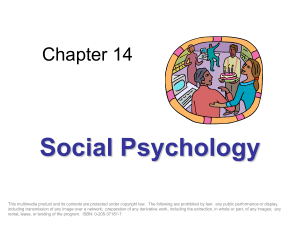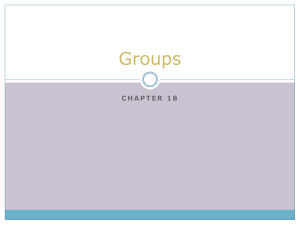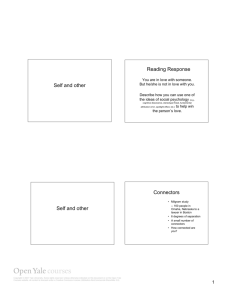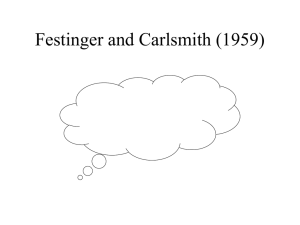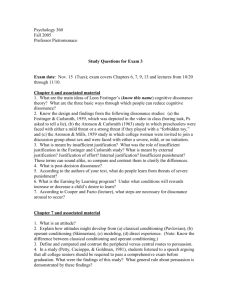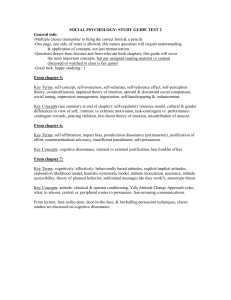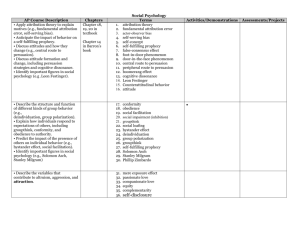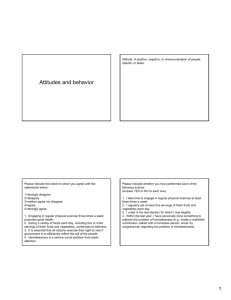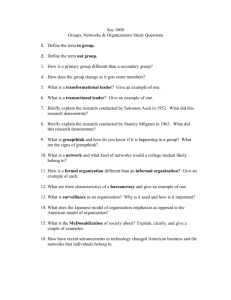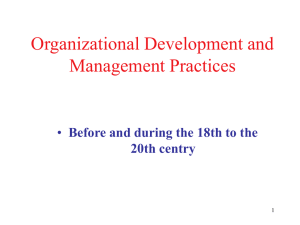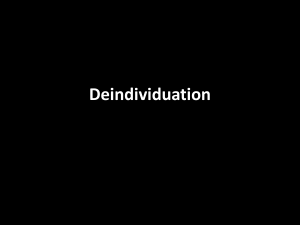Psych 160 Exam 1 Review Sheet Please email the GSIs any
advertisement
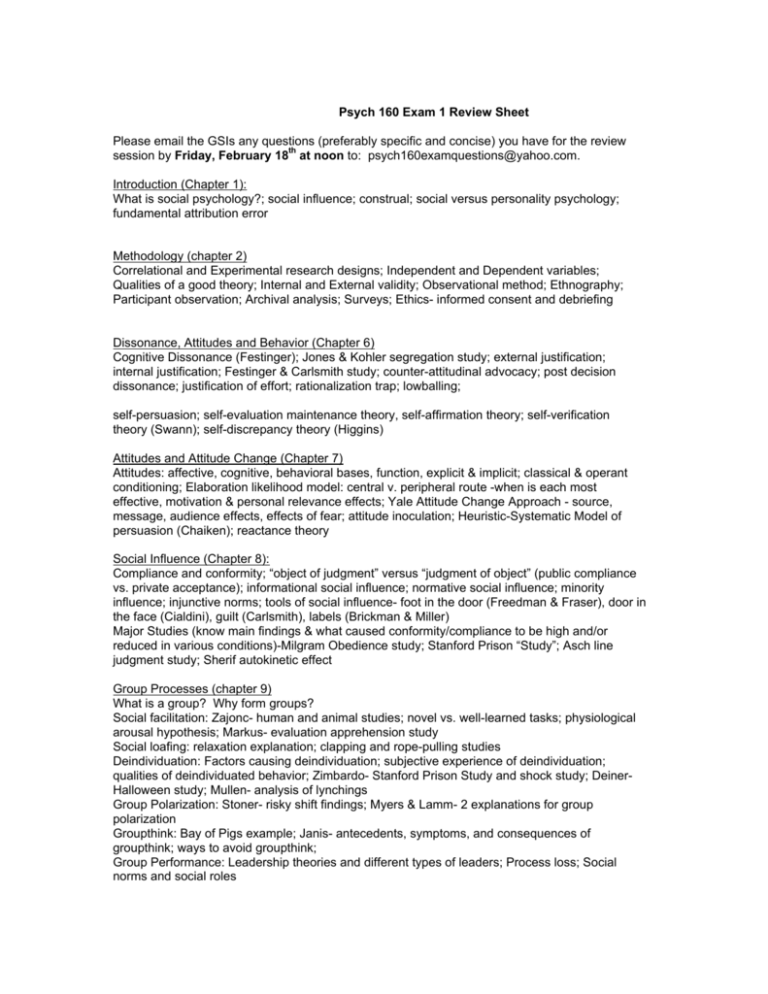
Psych 160 Exam 1 Review Sheet Please email the GSIs any questions (preferably specific and concise) you have for the review th session by Friday, February 18 at noon to: psych160examquestions@yahoo.com. Introduction (Chapter 1): What is social psychology?; social influence; construal; social versus personality psychology; fundamental attribution error Methodology (chapter 2) Correlational and Experimental research designs; Independent and Dependent variables; Qualities of a good theory; Internal and External validity; Observational method; Ethnography; Participant observation; Archival analysis; Surveys; Ethics- informed consent and debriefing Dissonance, Attitudes and Behavior (Chapter 6) Cognitive Dissonance (Festinger); Jones & Kohler segregation study; external justification; internal justification; Festinger & Carlsmith study; counter-attitudinal advocacy; post decision dissonance; justification of effort; rationalization trap; lowballing; self-persuasion; self-evaluation maintenance theory, self-affirmation theory; self-verification theory (Swann); self-discrepancy theory (Higgins) Attitudes and Attitude Change (Chapter 7) Attitudes: affective, cognitive, behavioral bases, function, explicit & implicit; classical & operant conditioning; Elaboration likelihood model: central v. peripheral route -when is each most effective, motivation & personal relevance effects; Yale Attitude Change Approach - source, message, audience effects, effects of fear; attitude inoculation; Heuristic-Systematic Model of persuasion (Chaiken); reactance theory Social Influence (Chapter 8): Compliance and conformity; “object of judgment” versus “judgment of object” (public compliance vs. private acceptance); informational social influence; normative social influence; minority influence; injunctive norms; tools of social influence- foot in the door (Freedman & Fraser), door in the face (Cialdini), guilt (Carlsmith), labels (Brickman & Miller) Major Studies (know main findings & what caused conformity/compliance to be high and/or reduced in various conditions)-Milgram Obedience study; Stanford Prison “Study”; Asch line judgment study; Sherif autokinetic effect Group Processes (chapter 9) What is a group? Why form groups? Social facilitation: Zajonc- human and animal studies; novel vs. well-learned tasks; physiological arousal hypothesis; Markus- evaluation apprehension study Social loafing: relaxation explanation; clapping and rope-pulling studies Deindividuation: Factors causing deindividuation; subjective experience of deindividuation; qualities of deindividuated behavior; Zimbardo- Stanford Prison Study and shock study; DeinerHalloween study; Mullen- analysis of lynchings Group Polarization: Stoner- risky shift findings; Myers & Lamm- 2 explanations for group polarization Groupthink: Bay of Pigs example; Janis- antecedents, symptoms, and consequences of groupthink; ways to avoid groupthink; Group Performance: Leadership theories and different types of leaders; Process loss; Social norms and social roles
